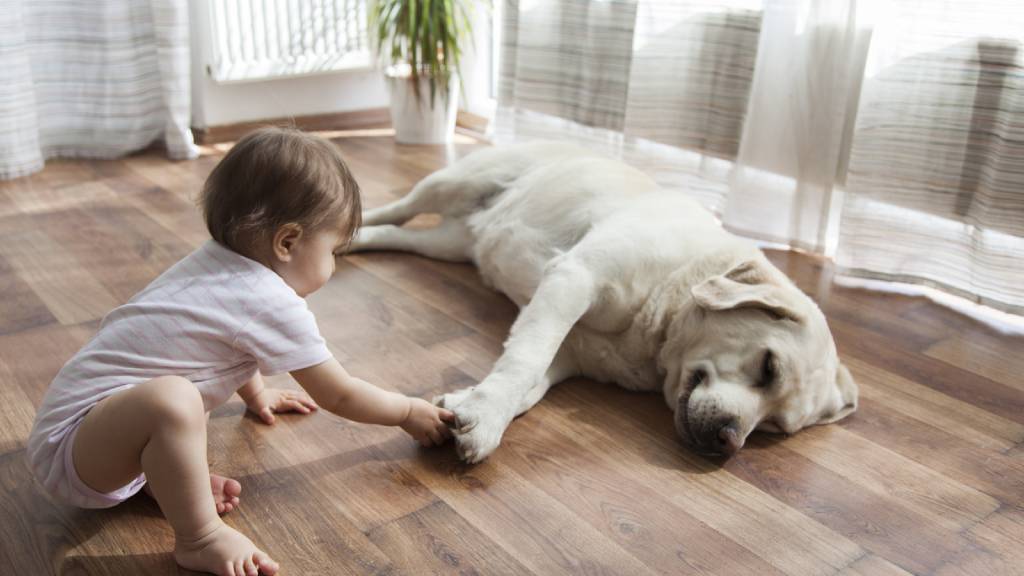Bringing home a new pet is an exciting and joyous experience. However, it can also be overwhelming for both the pet and the owner. Introducing a new pet to your home requires patience, preparation, and understanding. Whether you are bringing in a dog, cat, or any other furry friend, it is important to follow certain steps to ensure a smooth transition for everyone involved. In this article, we will discuss everything you need to know about introducing a new pet to your home.
1. Preparing Your Home for a New Pet

Before bringing a new pet into your home, it is important to make sure that your house is safe and suitable for them. Here are some things you should do:
Creating a Safe Space for Your Pet
It is essential to create a designated safe space for your new pet. This could be a crate, a room, or a specific area in your house. This space will serve as their sanctuary where they can feel secure and comfortable. Make sure to include their bed, food and water bowls, toys, and a litter box (if necessary) in this space.
Subheading: Setting Up the Space
- Choose a quiet and low-traffic area in your house.
- Make sure the space is free from any potential hazards such as electrical cords, toxic plants, or sharp objects.
- Create a cozy environment by adding blankets, pillows, and toys.
Subheading: Introducing Your Pet to the Space
- Allow your pet to explore the space on their own.
- Do not force them to stay in the designated area, but make it a positive and inviting space for them.
- Spend time with your pet in their safe space to help build a bond and sense of security.
Making Your House Pet-Proof
Just like baby-proofing your home, you also need to pet-proof it to ensure the safety of your new furry friend. This includes:
Subheading: Securing Dangerous Objects
- Store away any objects that could be potentially harmful to your pet, such as cleaning supplies, medications, and sharp objects.
- Keep small items like toys, coins, or hair ties out of reach as they can be choking hazards for pets.
Subheading: Protecting Your Furniture
- Cover or move furniture that you do not want your pet to scratch or chew on.
- Invest in scratching posts and toys to divert their attention away from your furniture.
Subheading: Avoiding Poisonous Plants
- Many common household plants are toxic to pets. Make sure to research and remove any poisonous plants from your home.
- If you have plants that are safe for pets, make sure they are out of reach and cannot be knocked over.
2. Introducing Your Pet to Other Pets

If you already have existing pets at home, introducing a new one can be challenging. Here are some tips to help make the introduction smoother:
Introducing Dogs to Other Dogs
Subheading: Meeting in a Neutral Place
- Choose a neutral location such as a park or a quiet street for the first meeting between the dogs.
- Keep both dogs on a leash and allow them to sniff and interact with each other in a controlled environment.
- Observe their body language and separate them if necessary.
Subheading: Bringing Them Home
- Once the initial meeting is successful, bring the dogs home separately.
- Start by keeping them in separate rooms and gradually introduce them to each other under supervision.
- Allow them to get used to each other's scents before letting them interact freely.
Subheading: Managing Their Interactions
- Always supervise the interactions between the dogs until they are comfortable with each other.
- Do not force them to play together but encourage positive behavior through treats and praise.
- Be patient and allow them time to adjust to each other.
Introducing Cats to Other Cats
Subheading: Slow Introduction
- Start by keeping the new cat in a separate room with their own food, water, litter box, and toys.
- Allow the resident cat to explore and get used to the scent of the new cat through the closed door.
- Gradually introduce them to each other by swapping rooms and eventually allowing face-to-face interactions.
Subheading: Managing Their Interactions
- Keep the first few interactions short and supervised.
- Look out for any aggressive behavior and intervene if necessary.
- Provide plenty of resources such as food bowls, toys, and scratching posts to avoid competition between the cats.
3. Introducing Your Pet to Children

If you have children at home, it is important to teach them how to properly interact with a new pet. Here are some tips to help make the introduction safe and positive:
Educating Your Children
Subheading: Setting Rules
- Sit down with your children and set clear rules for interacting with the new pet.
- Teach them how to handle the pet gently and not to disturb them when they are eating or sleeping.
- Make sure they understand the importance of giving the pet space and respecting their boundaries.
Subheading: Teaching Proper Handling
- Show your children how to properly hold and carry the pet.
- Supervise their interactions and correct any rough behavior.
- Encourage them to play with the pet using appropriate toys to avoid any accidental bites or scratches.
4. Establishing a Routine

Establishing a routine is crucial for your new pet to feel comfortable and secure in their new home. This includes:
Feeding Schedule
Subheading: Choosing the Right Food
- Consult with your veterinarian to determine the best food for your pet's age, size, and health condition.
- Choose high-quality food that is free from fillers and by-products.
- Gradually introduce the new food to avoid stomach upset.
Subheading: Establishing a Feeding Schedule
- Stick to a consistent feeding schedule to help with potty training and digestion.
- Provide fresh water at all times and clean the bowls regularly.
- Do not overfeed your pet to avoid obesity and other health issues.
Exercise and Playtime
Subheading: Knowing Your Pet's Needs
- Different pets have different exercise requirements. Make sure to research and understand your pet's needs.
- For dogs, daily walks and playtime are essential for their physical and mental well-being.
- Cats also need daily playtime to keep them active and engaged.
Subheading: Sticking to a Routine
- Set a regular exercise and playtime schedule for your pet.
- If you are unable to provide daily exercise, consider hiring a dog walker or investing in interactive toys for your cat.
FAQs

How long does it take for a new pet to adjust to their new home?
It varies from pet to pet, but it can take anywhere from a few days to a few weeks for a new pet to adjust to their new home. It is important to be patient and give them time to get comfortable in their new surroundings.
How do I know if my pets are getting along?
Look out for positive body language such as wagging tails, relaxed postures, and playful interactions between your pets. However, it is normal for them to have small disagreements initially, as they are still establishing their hierarchy.
What should I do if my pet is not eating?
A change in environment can cause stress and loss of appetite for some pets. Make sure to offer them their favorite treats and gradually introduce them to their new food. If the problem persists, consult with your veterinarian.
Is it okay to leave my new pet alone at home?
It is not recommended to leave a new pet alone at home for long periods, especially in the first few weeks. They are still adjusting to their new surroundings and may experience separation anxiety. Make sure to provide them with a safe space and plenty of toys to keep them entertained.
How can I help my new pet feel more comfortable in their new home?
Provide them with plenty of love, patience, and attention. Stick to a consistent routine and make sure they have a designated safe space where they can retreat if they feel overwhelmed. Gradually introduce them to new people, places, and experiences to help build their confidence.
Conclusion

Introducing a new pet to your home requires patience, preparation, and understanding. By following the tips mentioned in this article, you can ensure a smooth transition for both you and your new furry friend. Remember to give them time to adjust, and don't be afraid to seek professional help if needed. With proper guidance and care, your new pet will soon become a beloved member of your family.



